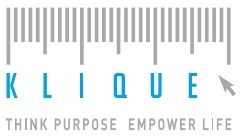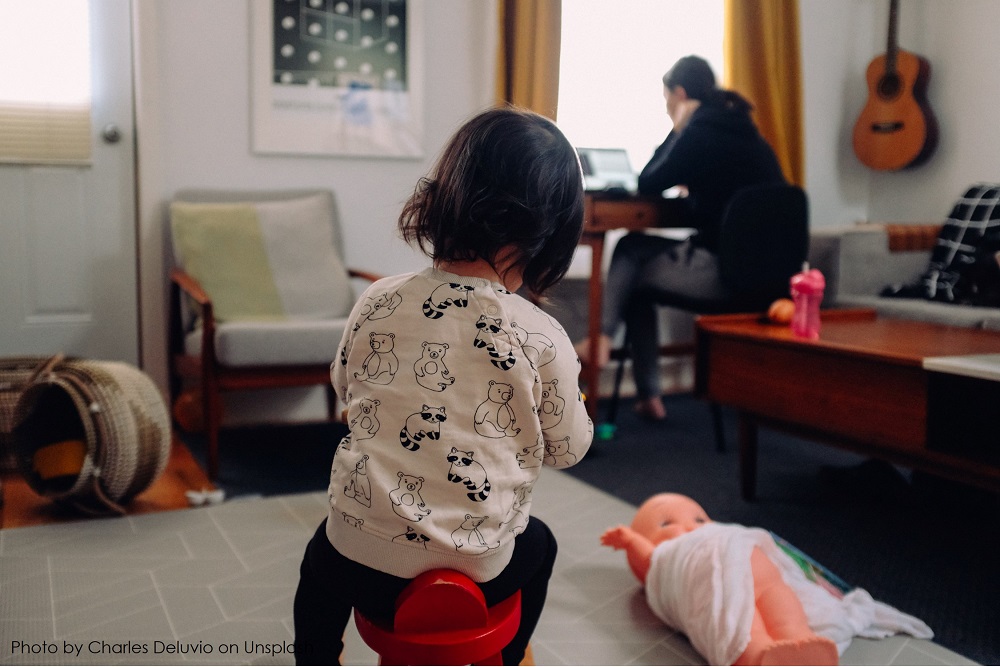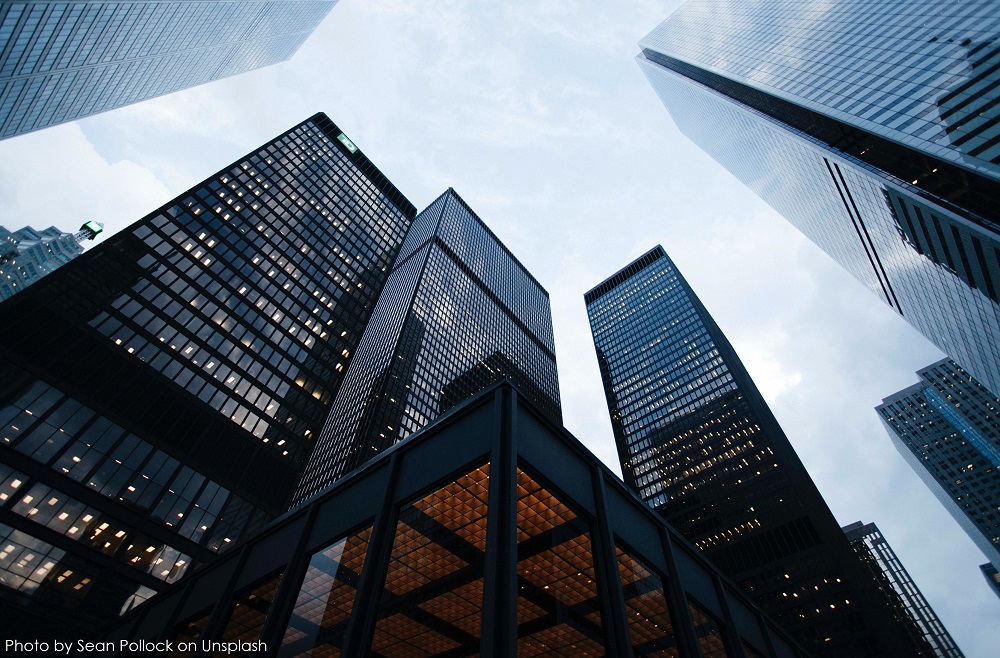Working remotely is not a new norm amidst COVID-19. However, with the implementation of circuit breaker from 7 April to 1 June 2020 to contain the spreading of COVID-19, it has caused companies from non-essential sectors to execute work-from-home, or telecommuting policy with almost immediate effect. While companies which do not have a business continuity plan on remote working policy in place have to struggle to comply with this “sudden” regulatory requirements, as an employee who has not or rarely experienced working remotely, what can we do to uphold our productivity while working in a totally different environment? Here are a few tips. Continue reading “Best Practices for Working Remotely”
Features and Characteristics of Sick Building
Sick building syndrome (SBS) is a common health concern. People’s health and wellbeing might be affected by the places where they work or reside. The amount of time they spend inside these buildings could determine the severity of the syndrome. The syndrome these people are experiencing may disappear after they leave the buildings. The major contributors for sick building syndrome are poor indoor air quality, toxic gases, volatile organic compounds (VOC) and mould. Continue reading “Features and Characteristics of Sick Building”
Unleashing Talents of Persons With Disabilities
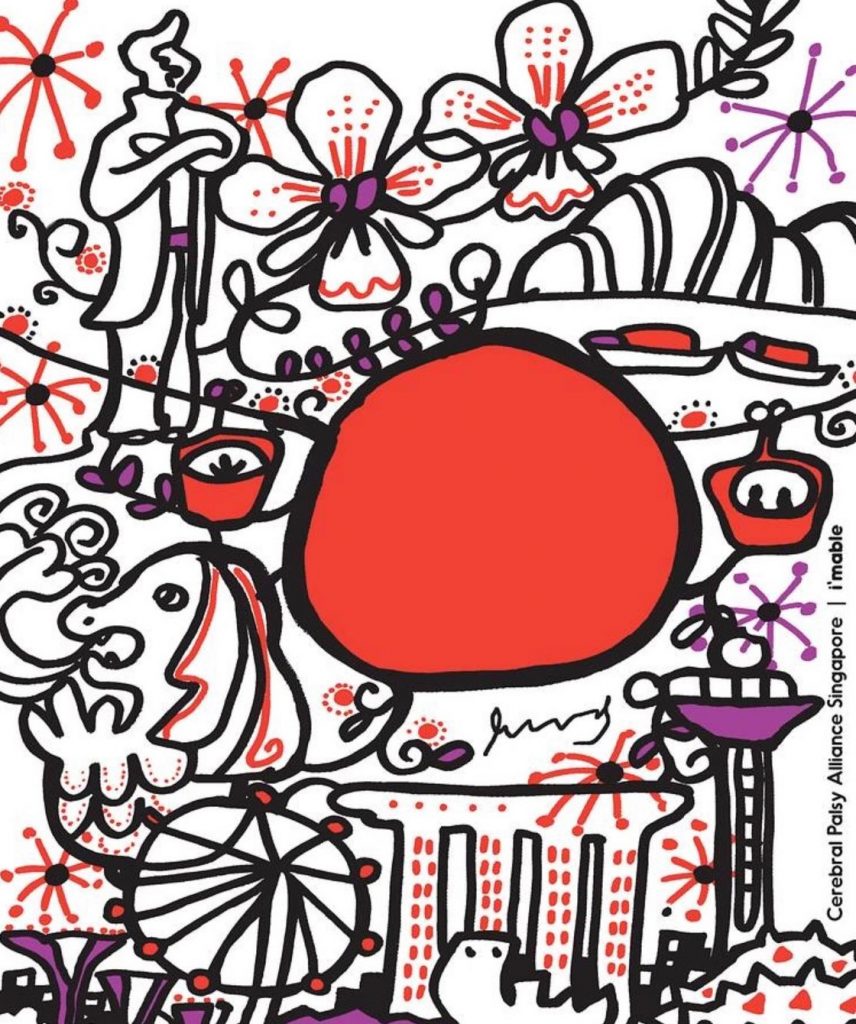
Once again, they proved that disabilities do not equal to inability.
This news from Channel NewsAsia excited us when the artwork of Ms Minah, who was born with celebral palsy, was featured on National Day Parade (NDP) 2020 Singapore Together Packs. Continue reading “Unleashing Talents of Persons With Disabilities”
Reopening Guidance for Worship Services and Religious Gatherings
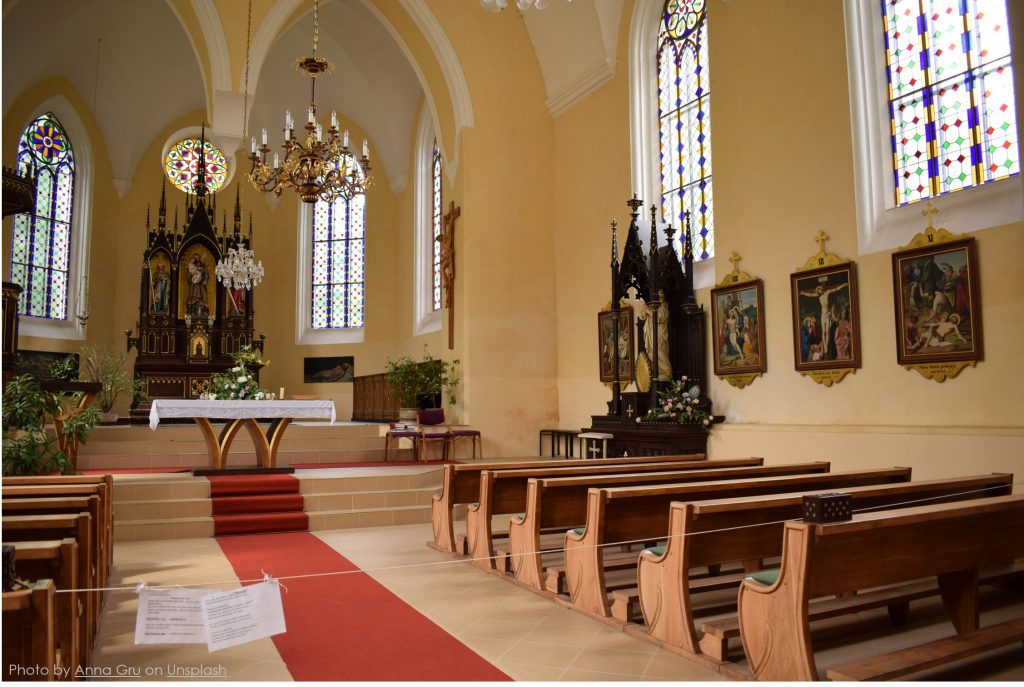
A house or place of worship is any building or other place where people gather and perform activities associated with a religion. Places of worship can include churches, temples, monasteries, synagogues, mosques, and similar places of worship. The reopening of houses or places of worship during the continuing threat of the novel coronavirus should not be interpreted as lessening of the threat of the virus. Failure to adhere to appropriate safeguards during such services, could result in the continued spread of the virus. Some urban religious facilities are residence to viral and antibody testing of undocumented and indigent people for the novel coronavirus, SARS CoV-2 virus. This document focuses on those houses of worship where people gather for religious services, rather than religious services found in the home. Other activities associated with religious organizations can include schooling, temporary sheltering and/or feeding for the needy, business meetings, conferences, retreats, and other social gatherings for cultural and sporting activities. Many of these same recommendations provided in this document can apply to these extended venues. This guide helps address some of the pressing questions houses of worship may have, including: Continue reading “Reopening Guidance for Worship Services and Religious Gatherings”
How to Pandemic-Proof Your Workplace
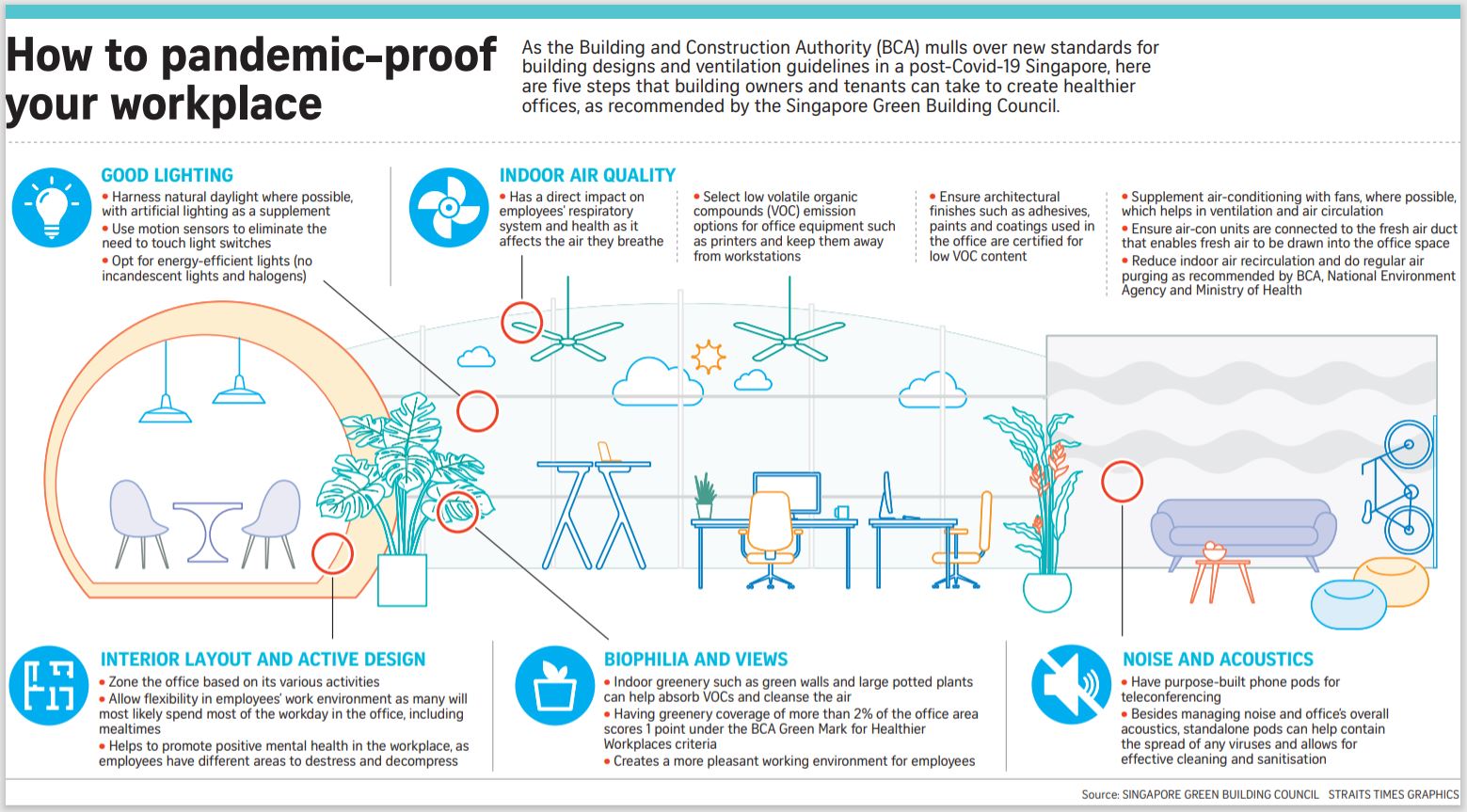
As the Building and Construction Authority (BCA) mulls over new standards for building designs and ventilation guidelines in a post-COVID-19 Singapore, here are five steps that building owners and tenants can take to create healthier offices, as recommended by the Singapore Green Building Council.
Good Lighting
-
- Harness natural daylight where possible, with artificial lighting as a supplement.
- Use motion sensors to eliminate the need to touch light switches.
- Opt for energy-efficient lights (no incandescent lights and halogens)
